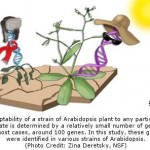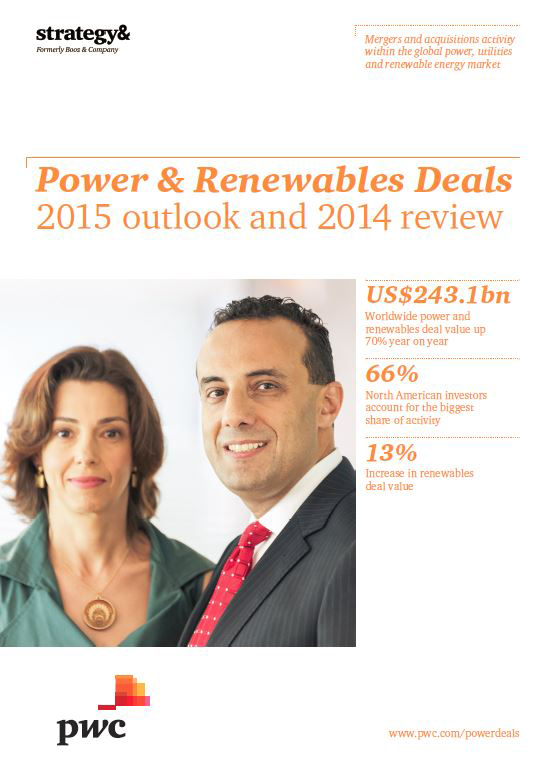 Berkeley – University of California, Berkeley, chemists have found a smoking gun proving that increased fertilizer use over the past 50 years is responsible for a dramatic rise in atmospheric nitrous oxide, which is a major greenhouse gas contributing to global climate change.
Berkeley – University of California, Berkeley, chemists have found a smoking gun proving that increased fertilizer use over the past 50 years is responsible for a dramatic rise in atmospheric nitrous oxide, which is a major greenhouse gas contributing to global climate change.
Climate scientists have assumed that the cause of the increased nitrous oxide was nitrogen-based fertilizer, which stimulates microbes in the soil to convert nitrogen to nitrous oxide at a faster rate than normal.
The new study, reported in the April issue of the journal ‘Nature Geoscience’, uses nitrogen isotope data to identify the unmistakable fingerprint of fertilizer use in archived air samples from Antarctica and Tasmania.
“Our study is the first to show empirically from the data at hand alone that the nitrogen isotope ratio in the atmosphere and how it has changed over time is a fingerprint of fertilizer use,” said study leader Kristie Boering, a UC Berkeley professor of chemistry and of earth and planetary science.
“We are not vilifying fertilizer. We can’t just stop using fertilizer,” she added. “But we hope this study will contribute to changes in fertilizer use and agricultural practices that will help to mitigate the release of nitrous oxide into the atmosphere.”
Since the year 1750, nitrous oxide levels have risen 20 percent – from below 270 parts per billion (ppb) to more than 320 ppb. After carbon dioxide and methane, nitrous oxide (N2O) is the most potent greenhouse gas, trapping heat and contributing to global warming. It also destroys stratospheric ozone, which protects the planet from harmful ultraviolet rays.
Not surprisingly, a steep ramp-up in atmospheric nitrous oxide coincided with the green revolution that increased dramatically in the 1960s, when inexpensive, synthetic fertilizer and other developments boosted food production worldwide, feeding a burgeoning global population.
Tracking the origin of nitrous oxide in the atmosphere, however, is difficult because a molecule from a fertilized field looks identical to one from a natural forest or the ocean if you only measure total concentration. But a quirk of microbial metabolism affects the isotope ratio of the nitrogen the N2O microbes give off, producing a telltale fingerprint that can be detected with sensitive techniques.
Archived Air from Cape Grim
Boering and her colleagues, including former UC Berkeley graduate students Sunyoung Park and Phillip Croteau, obtained air samples from Antarctic ice, called firn air, dating from 1940 to 2005, and from an atmospheric monitoring station at Cape Grim, Tasmania, which has archived air back to 1978.
Analysis of N2O levels in the Cape Grim air samples revealed a seasonal cycle, which has been known before. But isotopic measurements by a very sensitive isotope ratio mass spectrometer also displayed a seasonal cycle, which had not been observed before. At Cape Grim, the isotopes show that the seasonal cycle is due both to the circulation of air returning from the stratosphere, where N2O is destroyed after an average lifetime of 120 years, and to seasonal changes in the ocean, most likely upwelling that releases more N2O at some times of year than at others.
“The fact that the isotopic composition of N2O shows a coherent signal in space and time is exciting, because now you have a way to differentiate agricultural N2O from natural ocean N2O from Amazon forest emissions from N2O returning from the stratosphere,” Boering said. “In addition, you also now have a way to check whether your international neighbors are abiding by agreements they’ve made to mitigate N2O emissions. It is a tool that, ultimately, we can use to verify whether N2O emissions by agriculture or biofuel production are in line with what they say they are.”
 Changes in Fertilizer Use can Reduce N2O Emissions
Changes in Fertilizer Use can Reduce N2O Emissions
Limiting nitrous oxide emissions could be part of a first step toward reducing all greenhouse gases and lessening global warming, Boering said, especially since immediately reducing global carbon dioxide emissions is proving difficult from a political standpoint. In particular, reducing nitrous oxide emissions can initially offset more than its fair share of greenhouse gas emissions overall, since N2O traps heat at a different wavelength than CO2 and clogs a “window” that allows Earth to cool off independent of CO2 levels.
“On a pound for pound basis, it is really worthwhile to figure how to limit our emissions of N2O and methane,” she said. “Limiting N2O emissions can buy us a little more time in figuring out how to reduce CO2 emissions.”
One approach, for example, is to time fertilizer application to avoid rain, because wet and happy soil microbes can produce sudden bursts of nitrous oxide. Changes in the way fields are tilled, when they are fertilized and how much is used can reduce N2O production.
Boering’s studies, which involve analyzing the isotopic fingerprints of nitrous oxide from different sources, could help farmers determine which strategies are most effective. It could also help assess the potential negative impacts of growing crops for biofuels, since some feedstocks may require fertilizer that will generate N2O that offsets their carbon neutrality.
“This new evidence of the budget of nitrous oxide allows us to better predict its future changes – and therefore its impacts on climate and stratospheric ozone depletion – for different scenarios of fertilizer use in support of rising populations and increased production for bio-energy,” said co-author David Etheridge of the Centre for Australian Weather and Climate Research in Aspendale, Victoria.
Boering’s colleagues include D. M. Etheridge, P. J. Fraser, P. B. Krummel, R. L. Langenfelds, L. P. Steele and C. M. Trudinger of the Centre for Australian Weather and Climate Research; D. Ferretti of the National Institute of Water and Atmospheric Research in Wellington, New Zealand; K-R. Kim of the School of Earth and Environmental Sciences at Seoul National University in Korea; and T. D. van Ommen of the Australian Antarctic Division in Tasmania. Park is now at Seoul National University, while Croteau is at Aerodyne Research, Inc., in Billerica, Massachusetts.











